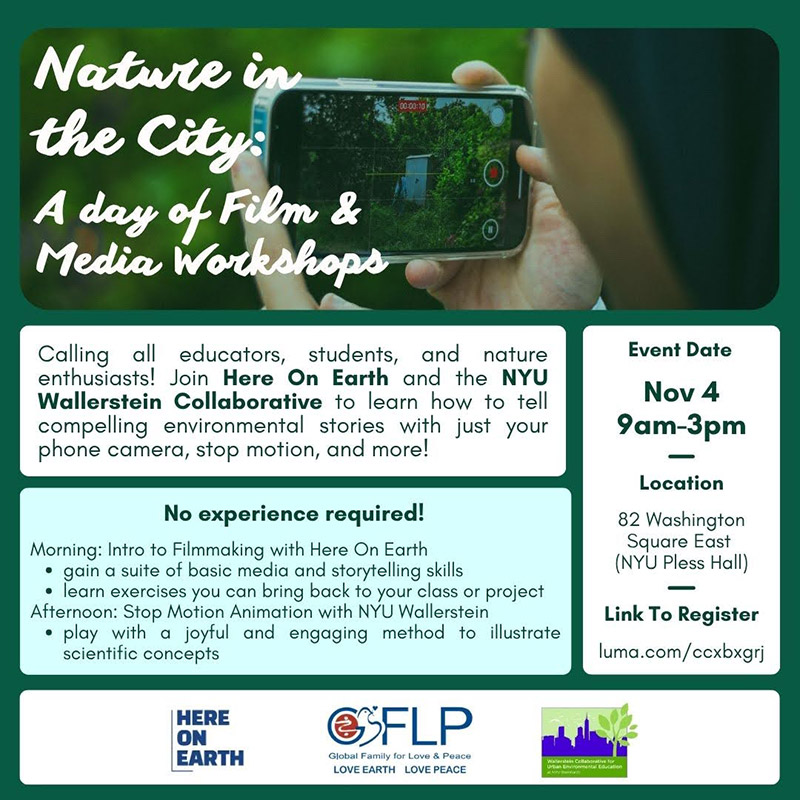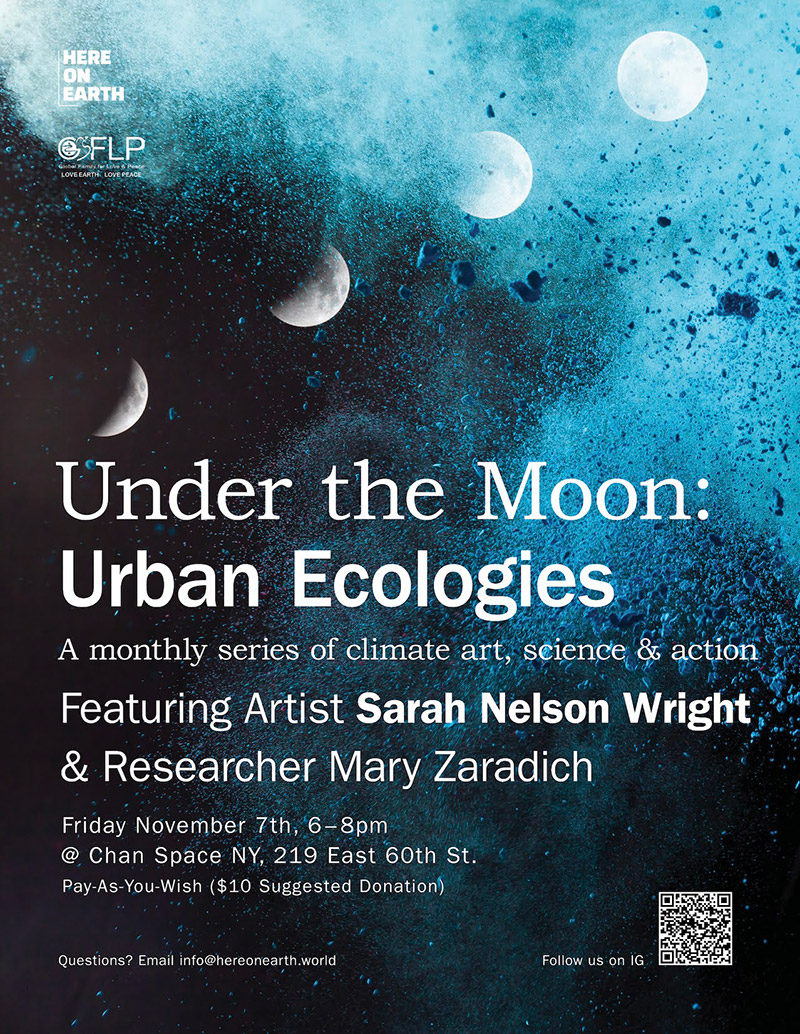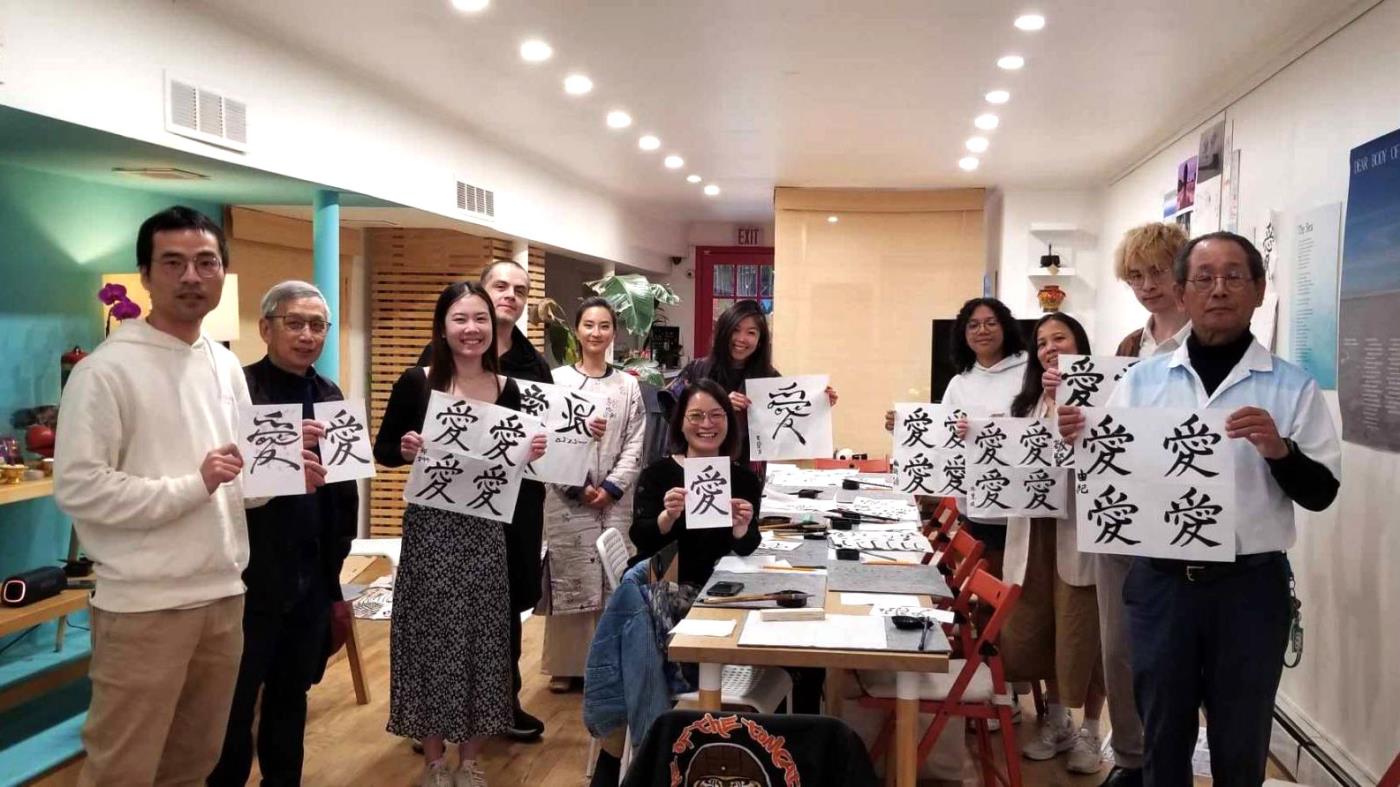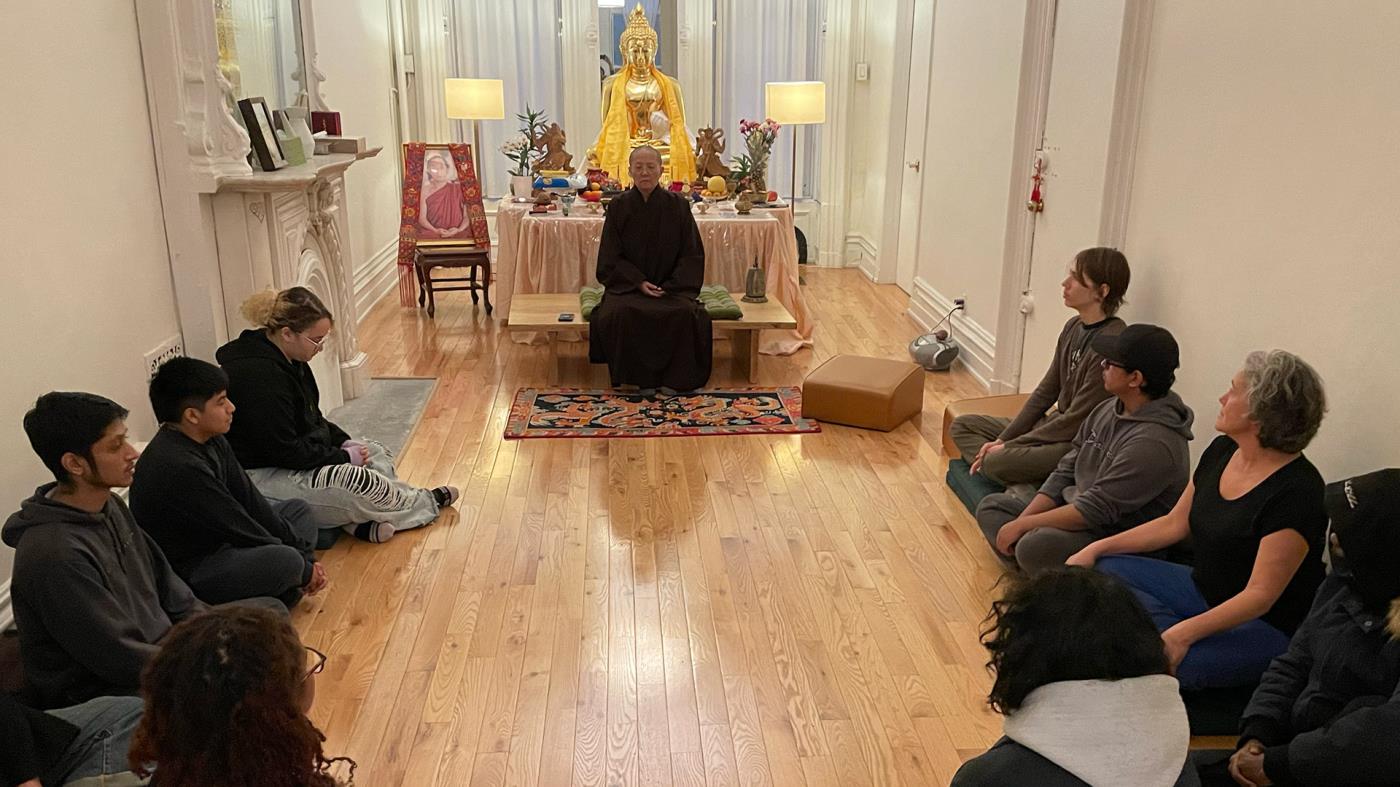Together with NYU, Ling Jiou Mountain GFLP Initiative Flips Traditional Thinking on Environmental Education with Film and Media Arts




















Ling Jiou Mountain's Global Family for Love and Peace (GFLP) initiative curated two activities—'Nature in the City: A Day in Film & Media Workshops' and the 'Under the Moon: Urban Ecologies' seminar—in early November 2025. Through these two events, GFLP aimed to guide the public to view the city's natural landscape from a different perspective using images and creative storytelling, thereby raising awareness of urban environmental issues.
"Here on Earth", an ongoing GFLP youth program focusing on environmental education and media training, shared its recent program results with a group of environmental education experts during the New York Climate Week/Autumn in 2025, sparking animated discussions on the spot. The "Here on Earth" team members further shared common notions with Mary Leou, Clinical Professor of Environmental Conservation Education at NYU—that moving storytelling better inspires people's actions and resonance when promoting environmental issues, yet the general public lacks such opportunities. To make such learning opportunities more accessible and not confined to classrooms, Professor Leou channeled the team to collaborate with NYU's Wallerstein Collaborative for Urban Environmental Education to create the 'Nature in the City - A Day in Film & Media Workshops'.
Creative Storytelling Ignites 'Go Green' Actions, while Powerful Images Stir up New Ecological Perspectives
The morning portion of the 'Nature in the City: A Day in Film & Media Workshops' saw the "Here on Earth" team coach participants through a series of easily learned and flexible visual and narrative exercises to narrate stories of the environment. The aim was to apply the media skill set acquired to expressions of their daily lives, teaching, studies, as well as social issues that concern them.
The morning program included a special outdoor session for hands-on drills in breakout groups to visually document trees in the park, and thereby experience the diversity of the process of observation and expression in image creation. The videotaping slowed down the pace and tempo that participants were used to, which afforded them a rare chance of appreciating ‘Nature in the City’ at leisure.
The afternoon program featured an introduction to 'Stop Motion Animation' by a Wallerstein Collaborative for Urban Environmental Education doctoral student, Quin Hricik, which is a fun and inspiring teaching method that helps teachers assess students' understanding of a scientific concept in creative ways.
The event attracted over 40 participants from various environmental and educational institutions, including the American Museum of Natural History, New York Botanical Garden, Central Park Zoo, and Columbia University. The attendees—primarily educators and environmental advocates—sought to incorporate images and storytelling into their daily work and curricula through more practical and creative teaching methods, thus promoting environmental concepts in a lively and engaging manner. During the workshop, participants exchanged ideas and utilized images to reinterpret the relationship between humanity and nature, ensuring environmental education is not merely the transmission of knowledge, but a process of guiding students to re-engage and feel the life force connecting the city and the Earth.
Cities as a Living Organism: an Artist Interprets the Man-Nature Link
On the other hand, the other GFLP activity titled 'Under the Moon: Urban Ecologies' featured two speakers, environmental media artist Sarah Nelson Wright, and former NASA research fellow Mary Zaradich. They explored the concept of 'Cities as a Living Organism' from their respective professional viewpoints, while pondering the interactive relations between human activities and the natural environment.
Sarah Nelson Wright, an artist originally from San Francisco’s Bay Area but now a Brooklyn resident, focuses on urban ecology and social changes long-term through public art and new media creation. Her works span videos, installations, and interactive media, aiming to guide viewers to reflect on the neglected emotional and environmental connections in the city. In her lecture, Sarah shared several of her creations in New York, including virtual reality sculptures in the waterfront area and a video model boat pool set in the polluted waters of the Superfund Site. These works, utilizing different media and narratives, reveal the fragility and potential for regeneration of urban ecosystems, and guide viewers to consider whether "technology can become a new bridge to understanding nature."
The other speaker, Mary Zaradich, a climate action advocate, graduated from Columbia University with a degree in Mechanical Engineering and Political Science and previously worked as a research assistant at the NASA Goddard Institute. In her speech, she shared her research findings on the formation of, and mitigation strategies for, the Urban Heat Island (UHI) effect. Mary pointed out that the UHI effect was particularly severe in economically disadvantaged communities and communities of African Americans, indigenous people, and People of Color. These areas, due to uneven resource allocation during early urban development, lack green spaces, parks, and adequate infrastructure. Dense buildings and poor ventilation contribute to persistently high ambient temperatures. However, it is precisely in these communities that residents have demonstrated innovation and resilience. She shared examples of leading residents to pioneer rooftop gardens, green roofs, and community climate education, showcasing the power of civic engagement from the bottom up.
GFLP Education Director Lu Chih-Lan remarked that the two named events shared one common core mission—to deepen the connection with environmental education institutions and the link between science and artists, thereby expanding the network of influence for environmental action. By way of interdisciplinary exchange and cooperation, more innovative environmental initiatives and educational aspirations emerge, which could contribute to the blueprint of the future University for Life & Peace (ULP), accumulating valuable nourishment for curriculum design. She insisted that only by aligning the strengths of communities to create resonance among art, education, and action-taking can one truly evoke people's care for the Earth by converging the sustainable energy of love and peace.


延伸閱讀
-
 Ling Jiou Mountain’s GFLP Teams Up with Global Partners to Advance Climate Education
Ling Jiou Mountain’s GFLP Teams Up with Global Partners to Advance Climate Education -
 LJM Global Family for Love and Peace witnesses participation of a 3-year-old creator during International Day of the Oceans activities
LJM Global Family for Love and Peace witnesses participation of a 3-year-old creator during International Day of the Oceans activities -
 Blending Myth and Science: Ling Jiou Mountain’s “Memory Portal Open Studio” Recognized by NYC Climate Education Awards
Blending Myth and Science: Ling Jiou Mountain’s “Memory Portal Open Studio” Recognized by NYC Climate Education Awards -
 LJM's "Here On Earth" Spring Program 2025 Launches: Engaging Youth in Climate Action
LJM's "Here On Earth" Spring Program 2025 Launches: Engaging Youth in Climate Action